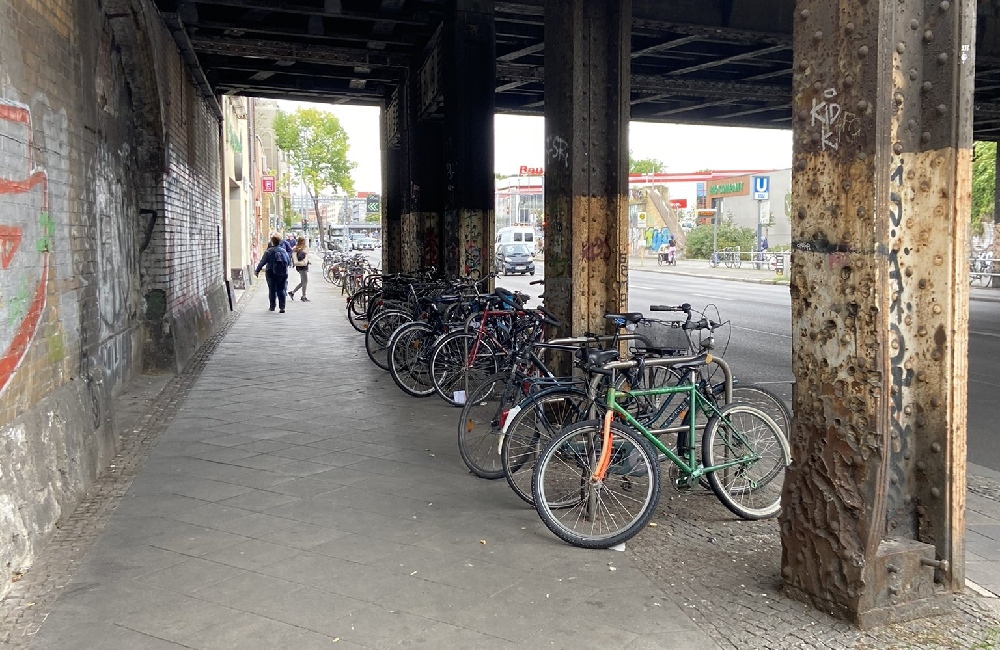
“It’s a matter of tuning your eye,” says Peter Graham, the man behind Berlin Battle Damage, a blog he has run since 2018 to document the many sites in Berlin which still carry reminders of the extraordinary fighting that took place in April and May 1945. “I remember watching a documentary which said that there were only a few sites remaining in Berlin where you could see damage from the war. I thought, that’s not right, they’re everywhere. The blog grew from there, but that’s probably when I started documenting it all.”
Berlin Battle Damage is a blog on facebook and twitter – with a website forthcoming – which seeks to document the scars this city still bears from the war. When we meet, in a cafe on Yorckstraße, he is able to point out evidence of lasting damage mere steps away on the nearby Yorckbrücken bridges. He even shows me a table on the side of the bridge which displays the last time they were painted. “Look,” he says. “Can you read the date? 1939. I’ve not seen that before. I find something new every time I’m here.”
At these 12 sites – all taken from the Berlin Battle Damage blog – you can still witness the scars of 1945 for yourself.
The bridges at Yorckstraße

At first, the Yorckstrasse bridges might not look like much, but these famous Berlin landmarks have stood since around 1883. Forty five distinct railway bridges once crossed here, some of which are still in use – and they bear a number of distinct marks from the warfare of 1945.
When the Soviets were approaching from the east, moving up Yorckstraße from Gneisenaustraße and Neukölln, these bridges made a convenient defensive position for the retreating Germans. In one photo from the period, you can even see that one of the bridges has collapsed, blocking off the street entirely.
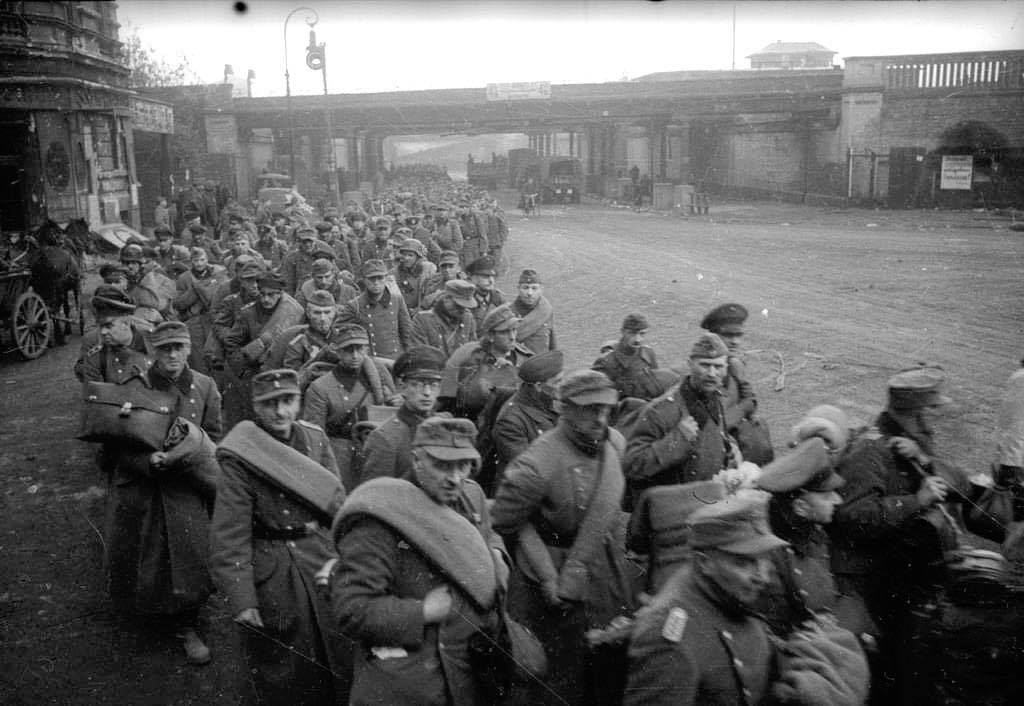
Today, the supporting columns still show clear signs of the fighting. The major damage you can see below was probably caused by a bomb or artillery fire. The iron itself has been warped by the impact and one of the rivets has been forced out, while the wall opposite shows clear signs of battle damage too. The dirty white paint job also dates from World War II, when the supports were coloured so as to be visible during the blackout.

Flak towers at Humboldthain
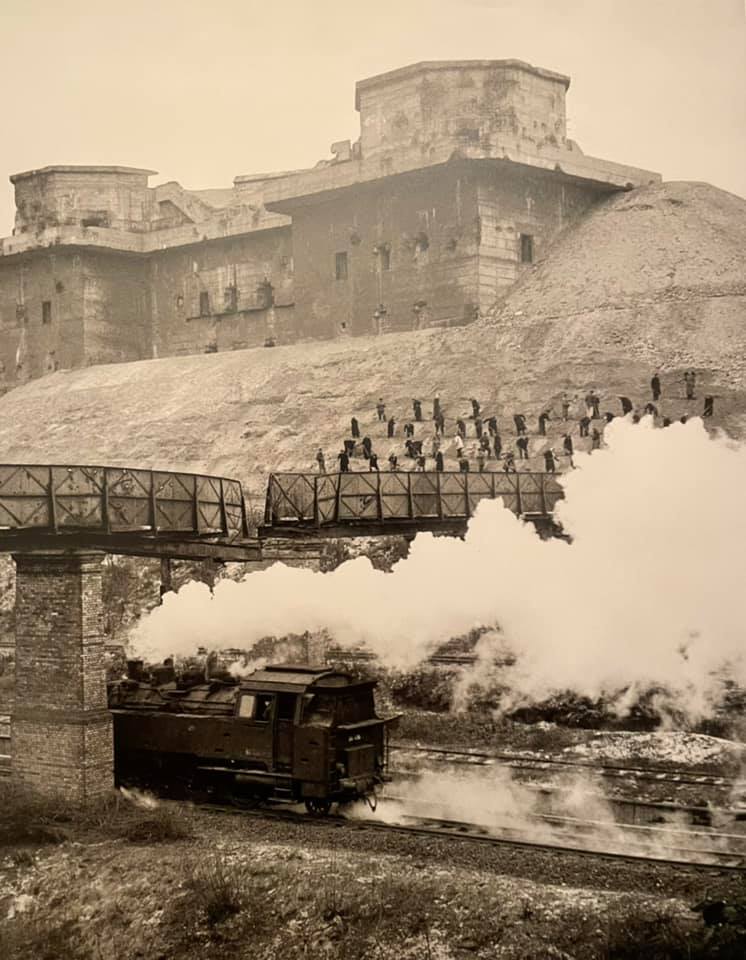
The flak towers at Volkspark Humboldthain are one of the best known remnants of WWII, and they formed a key part of the city’s air defence strategy. Built with forced labour between October 1941 and April 1942, these enormous structures were manned by Luftwaffe helpers (often schoolchildren) and managed to down 32 aircraft during the war.
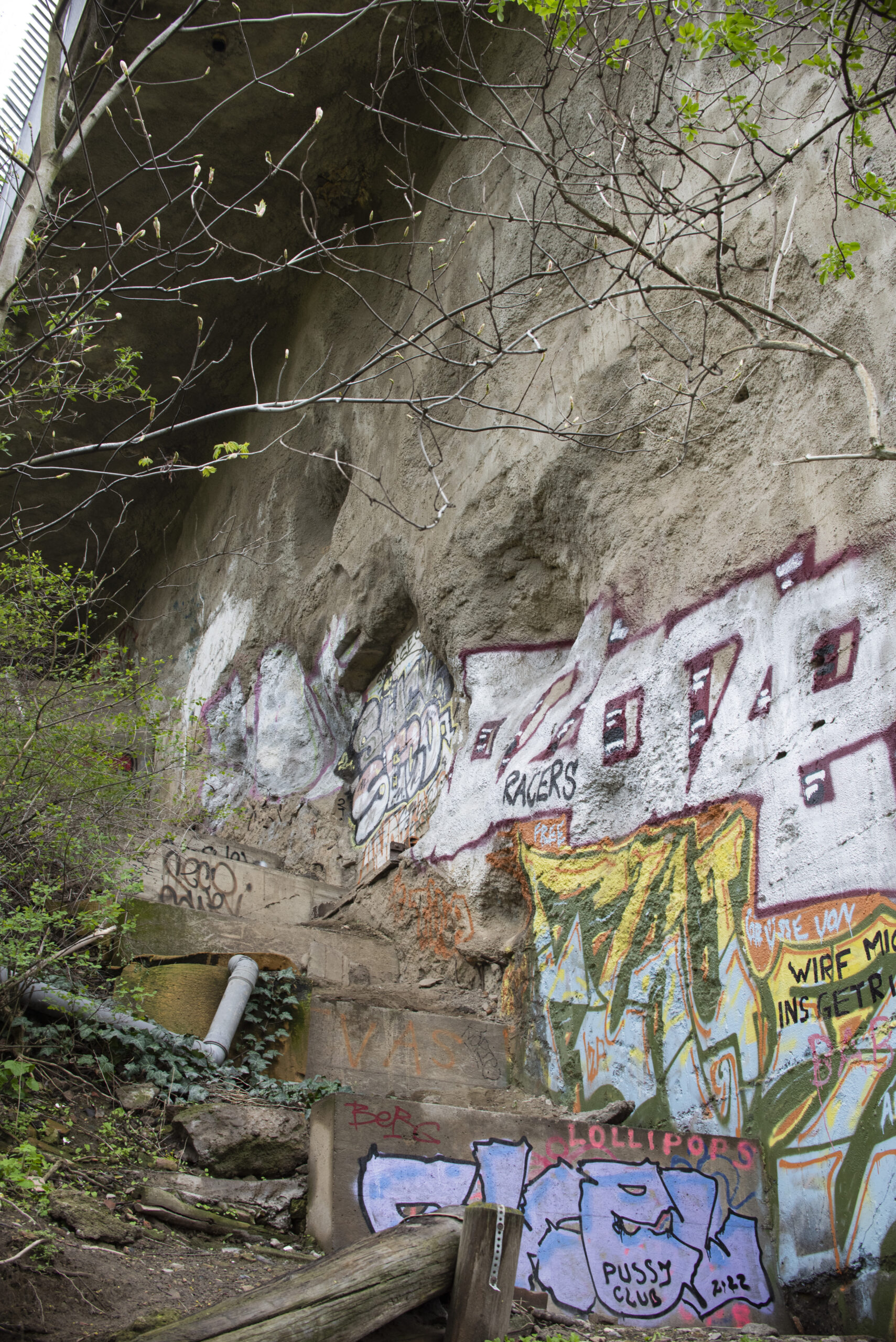
On the 26th April 1945, when the Soviets were advancing from the North West, they bombarded the structure with 203mm Howitzers – but it managed to hold out. The Red Army bypassed the building, and the defending forces surrendered on May 3rd.
Today, rock climbers use the pock marked walls to practice, gaining footholds in the shell scarred walls.
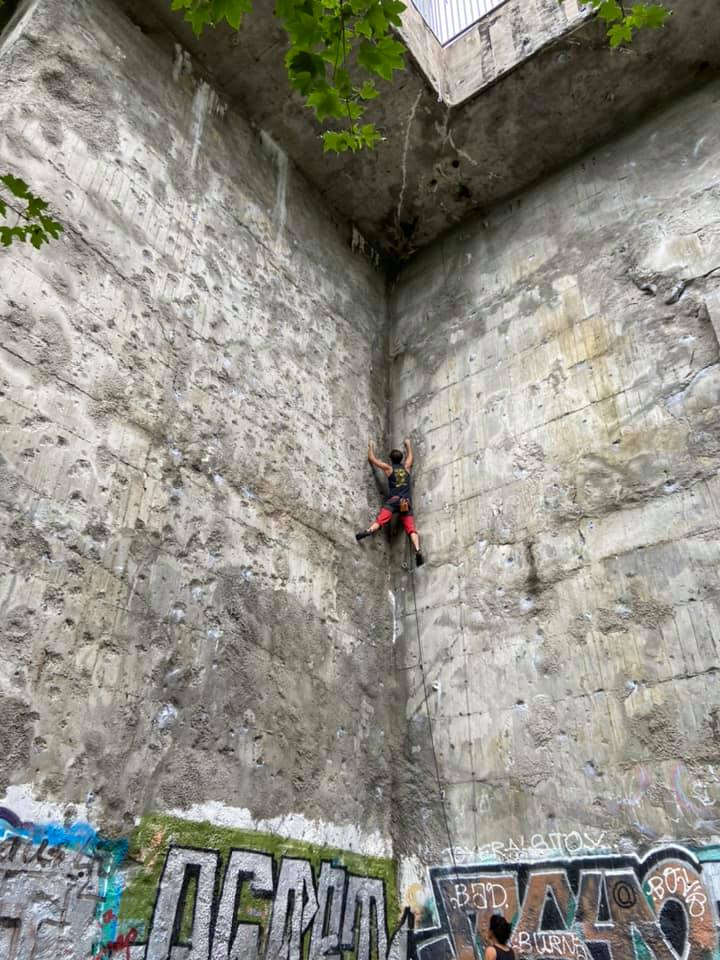
Sophien Church in Mitte
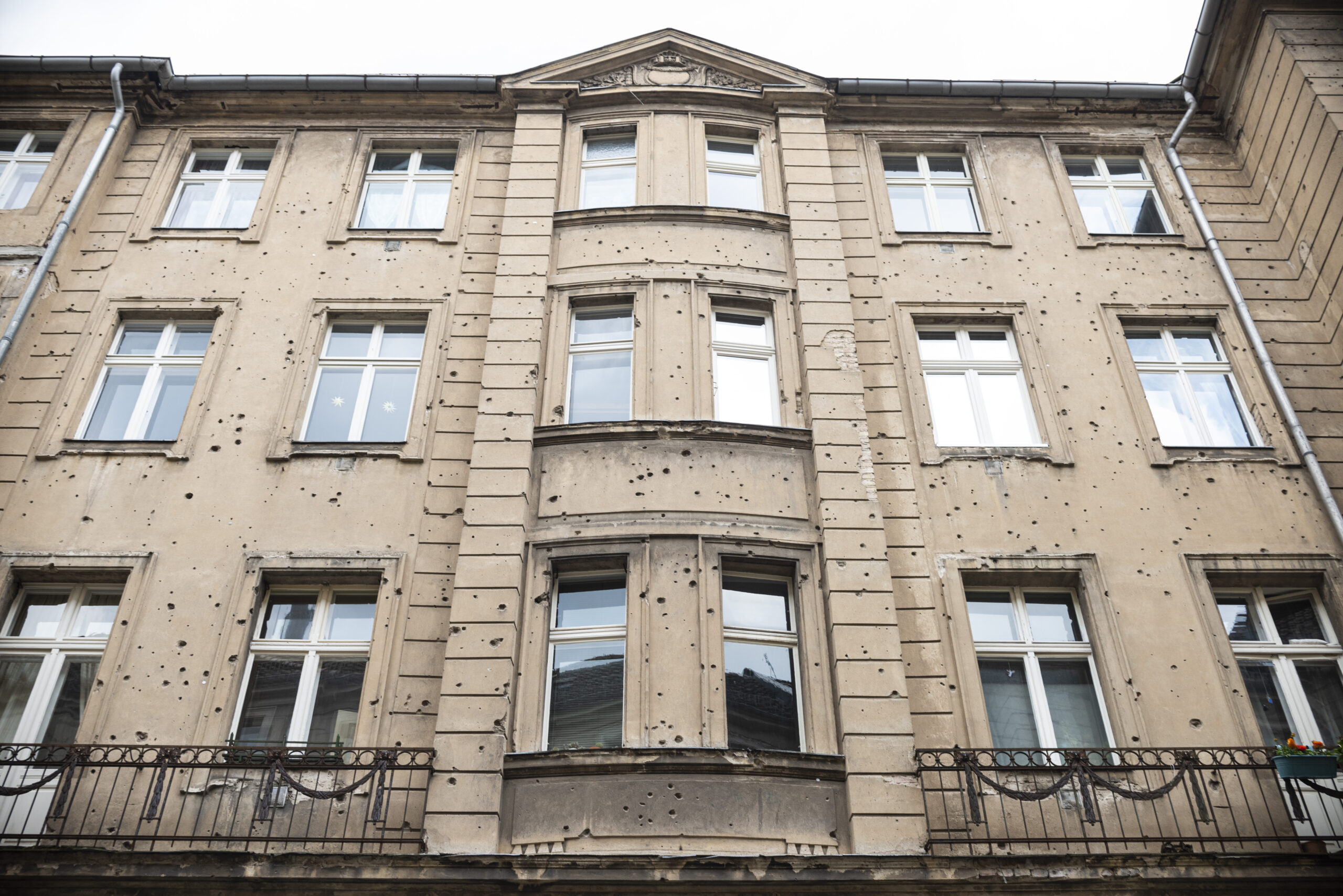
These walls look as though the fighting happened yesterday. The battle which scarred this structure took place on April 24, when the Soviet 7th Corps came up against a mixed force composed of elements of the Wehrmacht, SS, Volkssturm and Hitler Youth units. The fighting was extremely fierce, as can be seen by these ravaged walls, where most of the damage was likely caused by small arms fire.
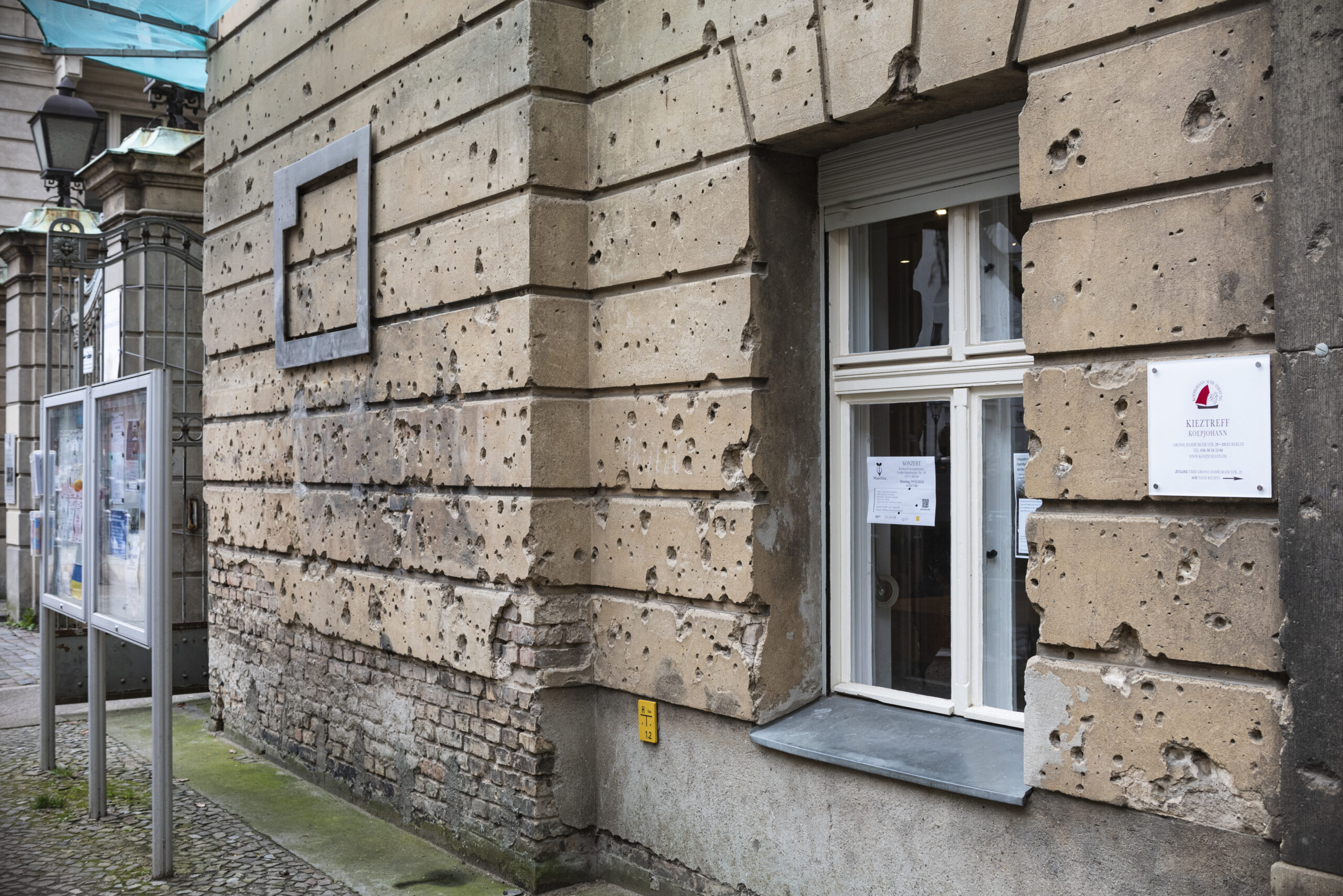
S-Bahn bridge on Leibnizstraße in Charlottenburg

This is a dramatic one. In one of the supporting columns of the S-Bahn bridge on Leibnizstraße in Charlottenburg, there is a shell hole which has pierced entirely through the supporting beam. You can even see the spiralling lines of the rifling, left by the shell as it passed through.
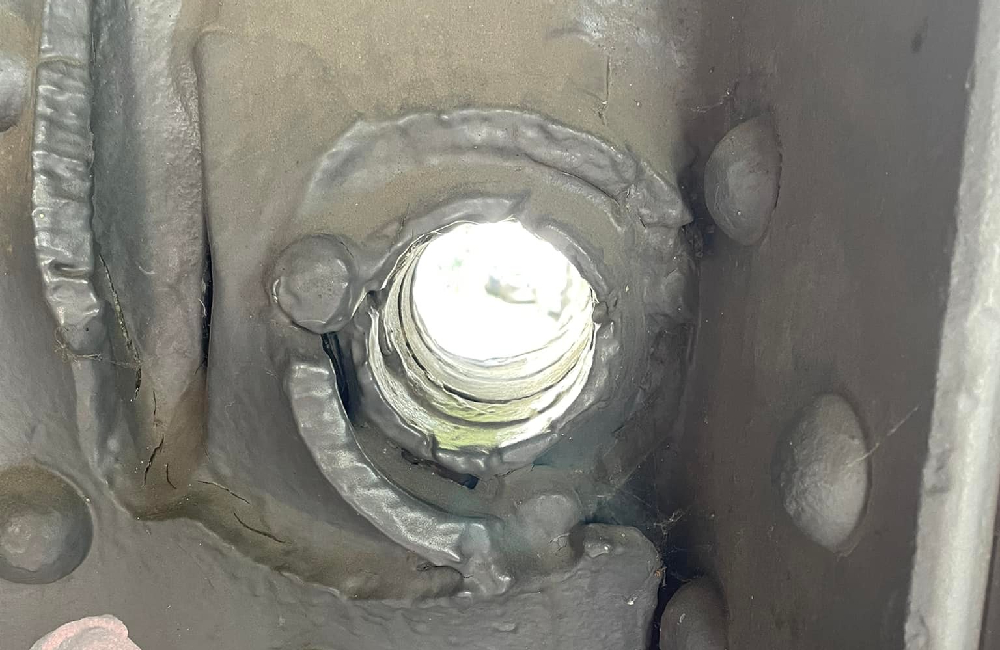
Peter Graham from Berlin Battle Damage suggests that this would have been a 85mm armour piercing shell from a Soviet T34/85 tank – and the trajectory, plus the surrounding damage, suggests that after this shell passed through the bridge support, it struck the next one and deflected into the brick wall. The fighting here occurred between April 30 and May 1, 1945, when the Germans were attempting to breakout westwards towards Spandau.

The AEG factory complex on Gustav Meyer Allee
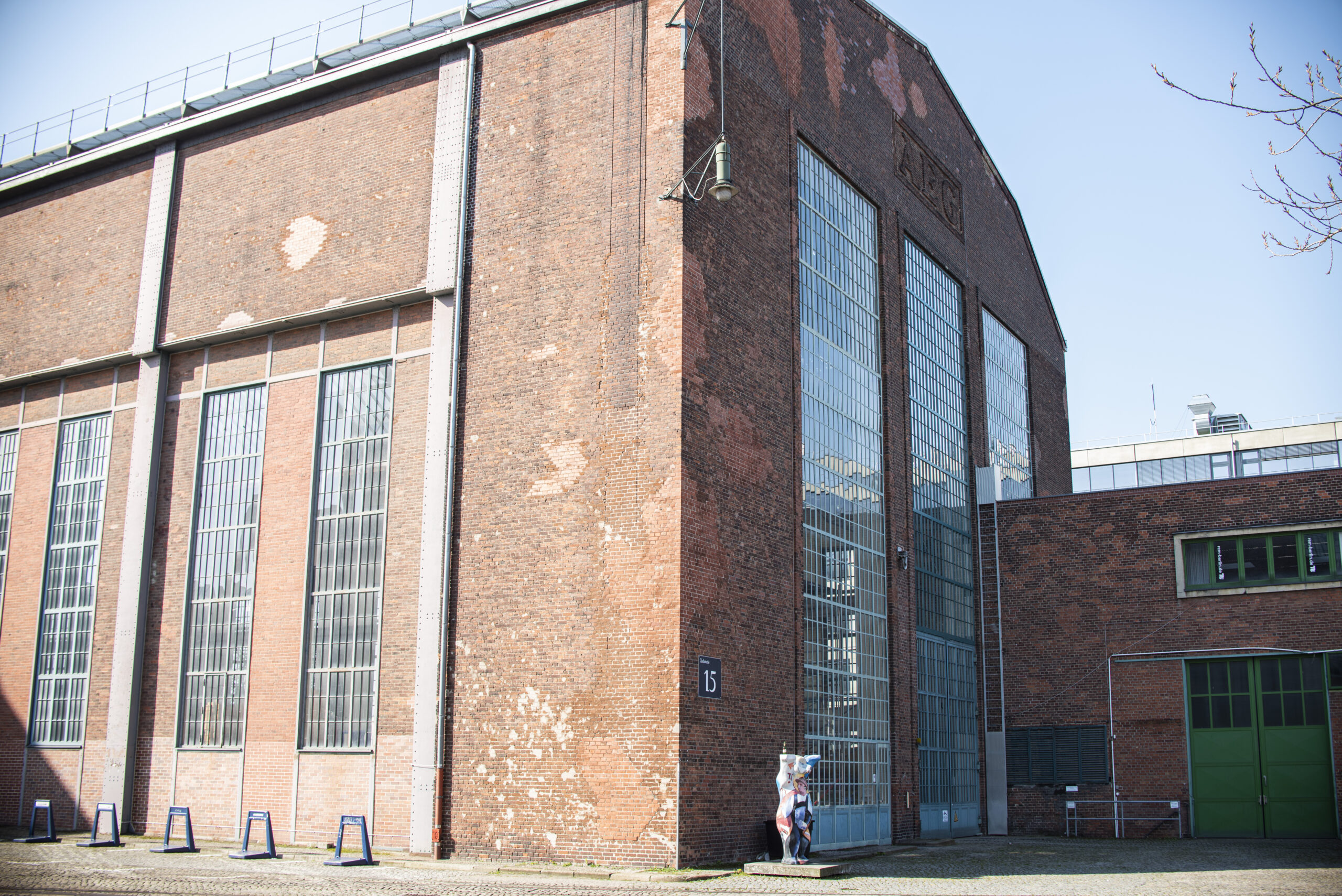
This AEG (Allgemeine Electricitäts Gesellschaft) factory was built in 1887 – but the damage you can see today comes from the 26th April 1945 when the Soviets began their assault on the factory when attempting to bypass the Humboldthain flak towers (see above). This enormous brick structure was defended by Anti Aircraft, Volkssturm and Police units and anti-aircraft guns were fixed to the roof. The Red Army had to take the factory floor by floor, and even today its walls bear the marks of small arms fire, as well as mortar and artillery strikes.
Murellenschlucht und Schanzenwald: Execution Place No 5
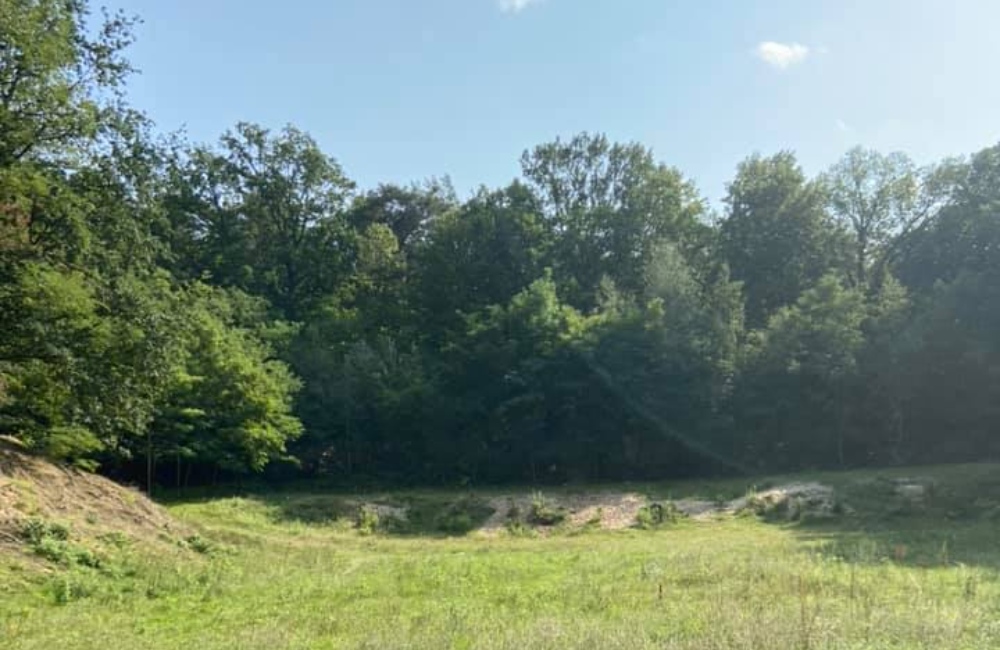
This is surely one of the grimmest sites on this list. Between the Olympic Stadium and Ruhleben U-Bahn station lies an area of scrubland and forest known as the Murellenschlucht und Schanzenwald. This place was used as a training area and rifle range during the war, but it also holds the spot once known as Execution Place No 5, where any conscripts who refused to report for service, deserted or refused to fight were shot as an example and a warning to the other troops.
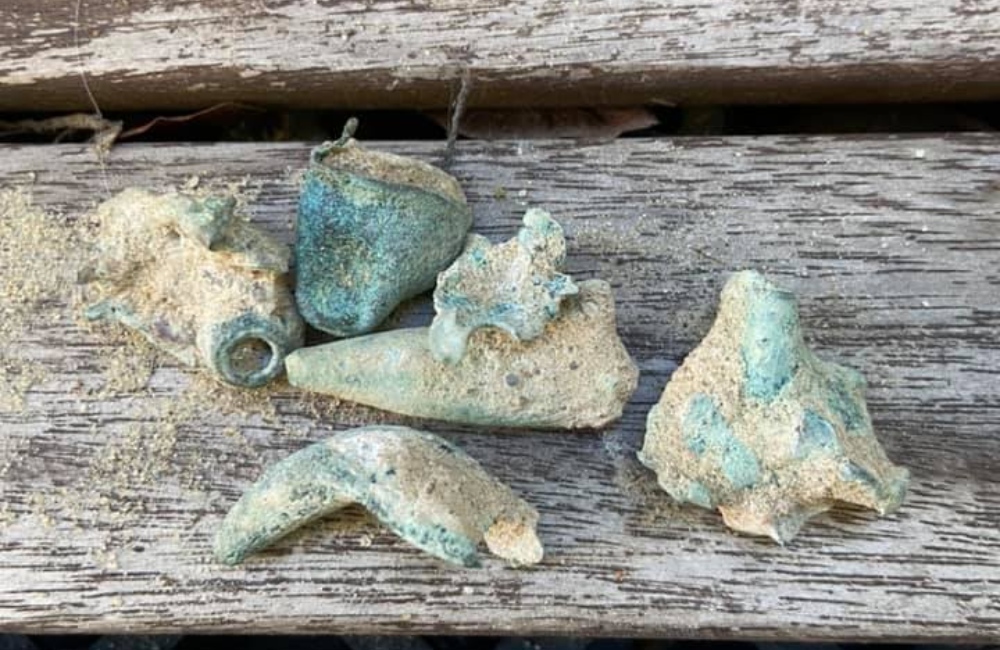
Today, this wooded area is a favourite of dog walkers, but the ridge pictured above is exactly where the young troops were strapped to three posts and executed. When Peter Graham visited this site, he even found mangled bullets just below the sandy soil.
Stadtbahn railway viaduct at Friedrichstraße

The Stadtbahn railway viaduct runs east from Friedrichstraße S-Bahn station, and formed a major defensive barrier during the fighting in 1945. The Soviet 7th corps reached this heavy stonework structure on April 30th, and they were held up for long enough that the SS Nordland Division attempted to break out north along Friedrichstasse on May 1.
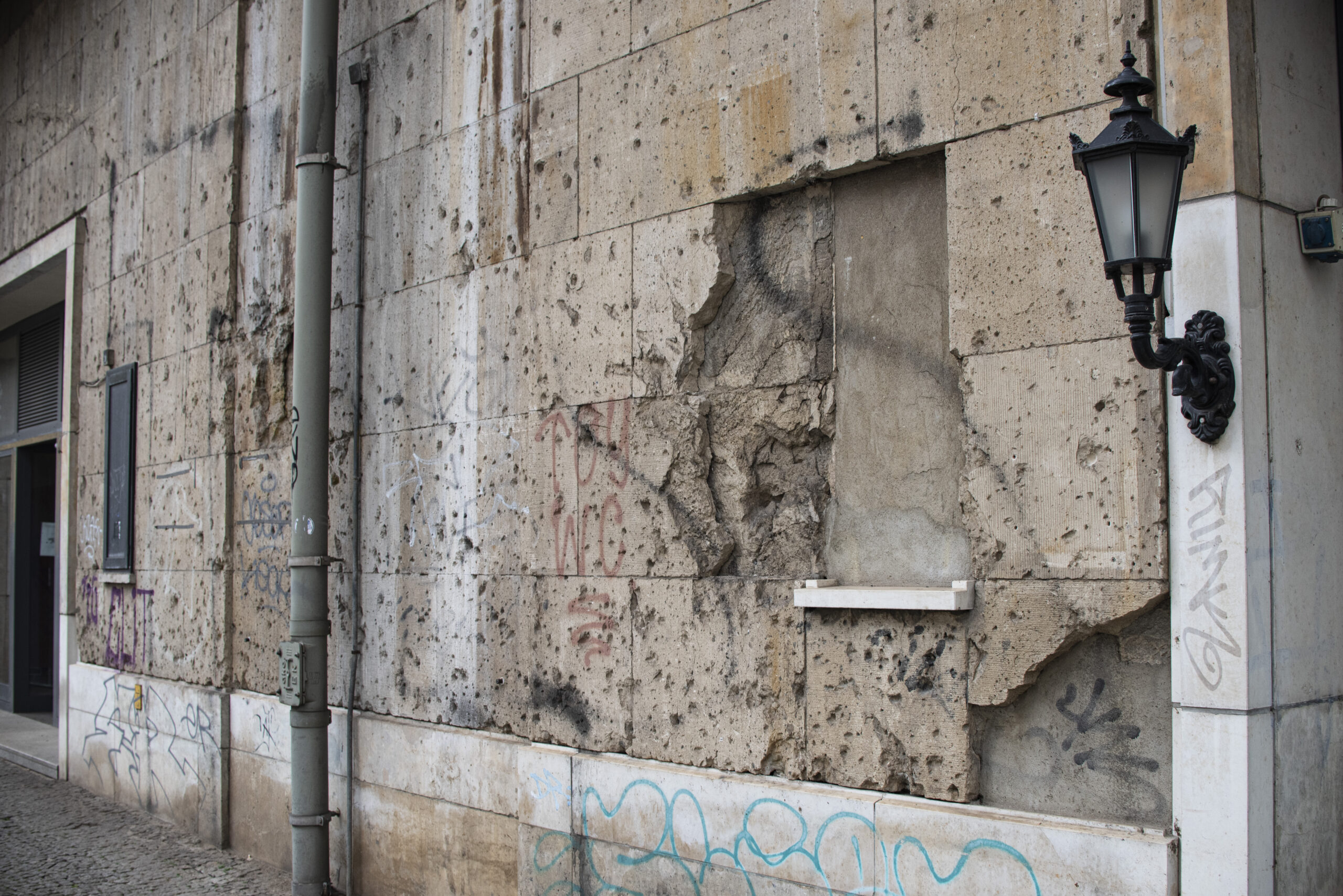
They didn’t make it, though, and very few of the unit survived. Today, major damage can be seen all along the structure.
Sankt Nicolai und Sankt Marien Friedhof
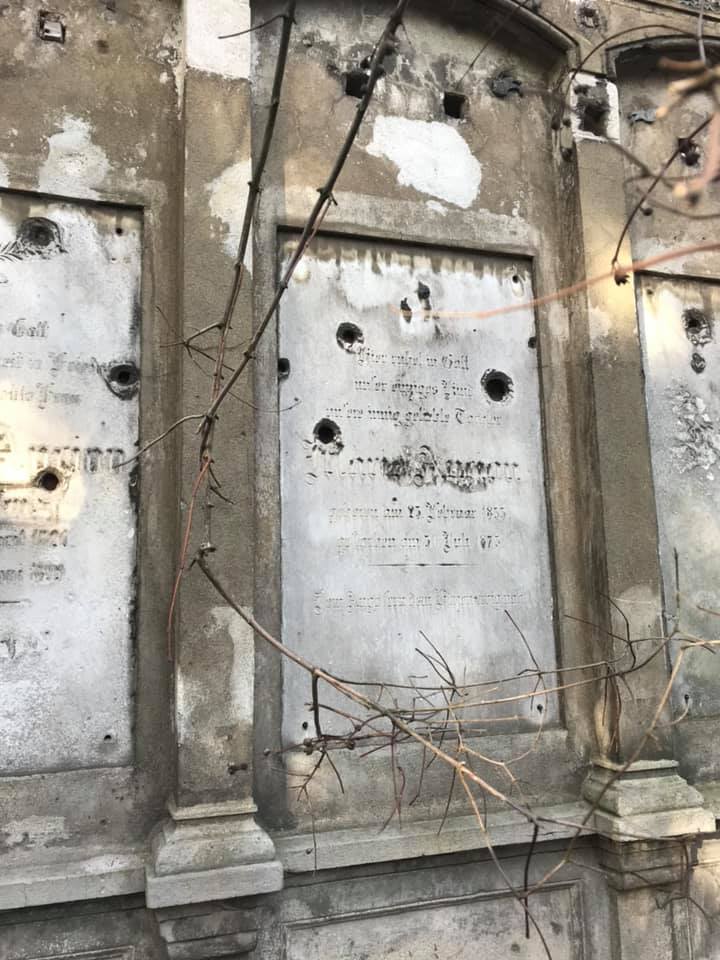
Since they remain relatively untouched, cemeteries are a good place to look for war damage in Berlin – and this graveyard has a particular significance for the Nazi period. Horst Wessel was buried here, the famous “Nazi martyr” who was killed by a member of the KPD, the communist part of Germany, on 14th January 1930. His grave no longer has any markings – but there are photos of Hitler visiting the site. Many of the gravestones and mausoleums show bullet holes from the fighting in 1945.
Martin Gropius Bau
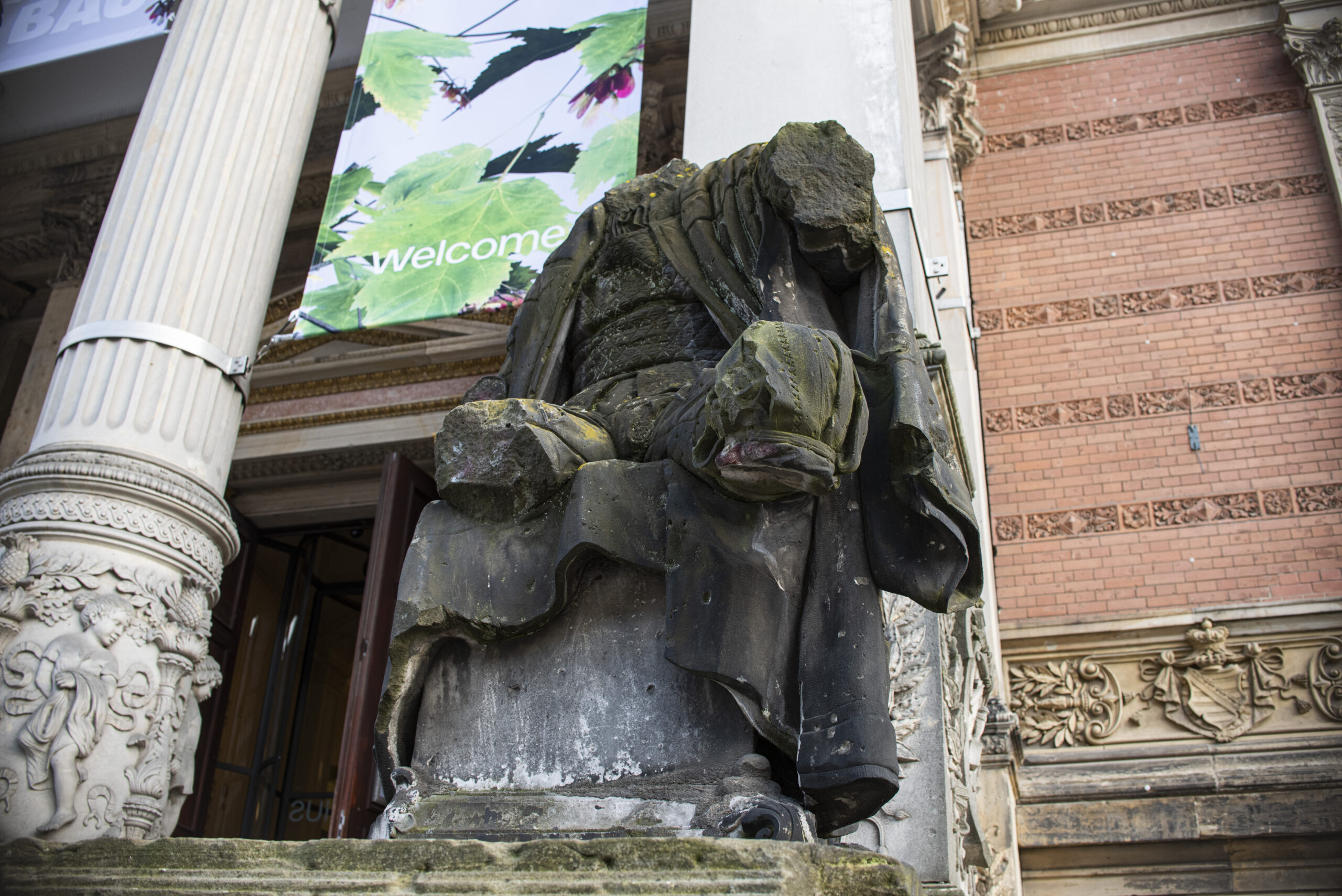
Just as today, the Martin Gropius Bau was a museum in 1945. The street it lies on however was not called Niederkirchnerstraße, but Prinz Albrecht Strasse – notorious for housing the headquarters of the Gestapo. Today, the building next to Martin Gropius Bau is gone, replaced by as the Topography of Terror exhibition, but it was clearly an important target for the invading Soviet army.
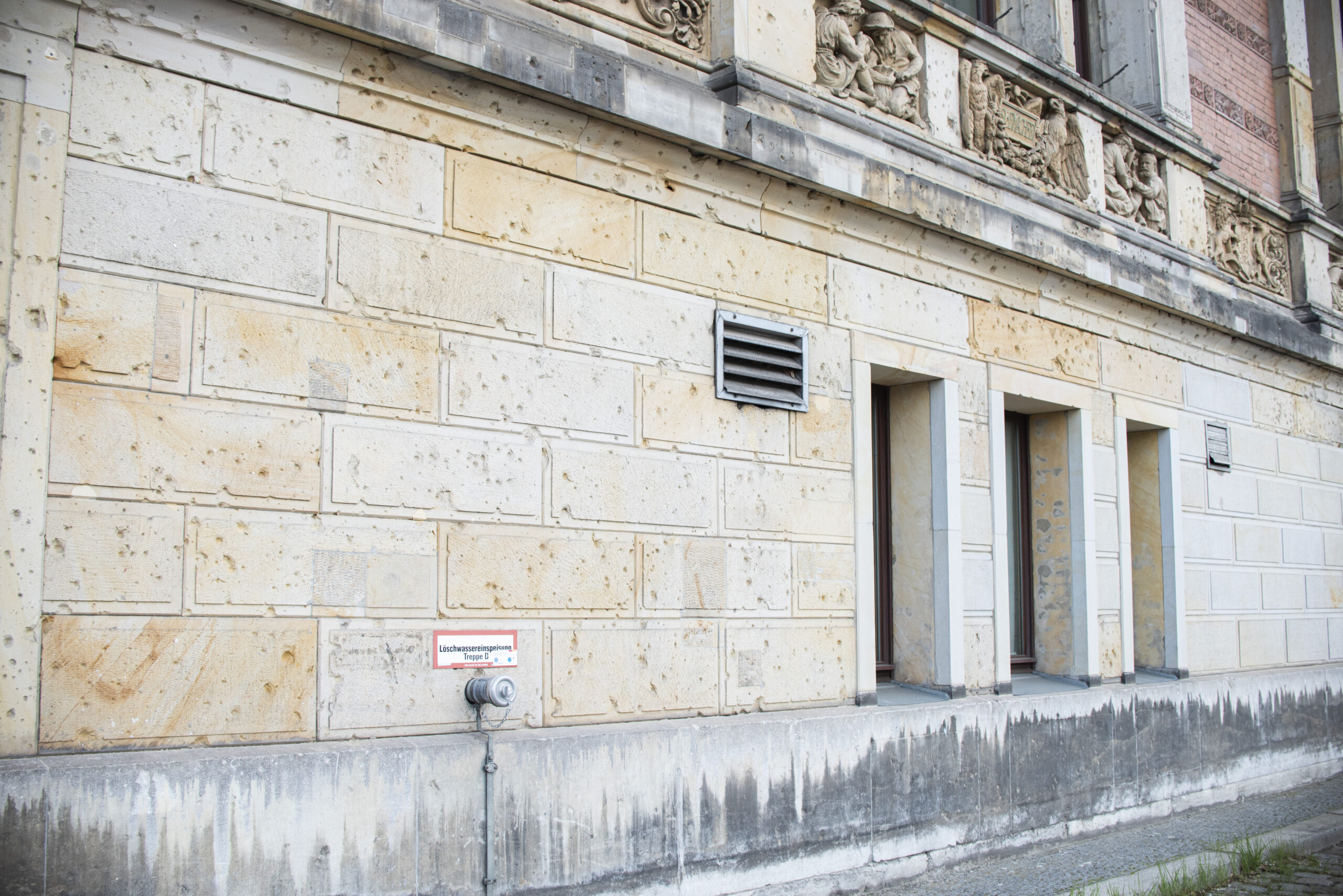
At dawn on April 29th 1945, the 301st Soviet Rifle Division assaulted the Gestapo Headquarters and managed to capture it after heavy fighting. The return fire they took from the SS defenders is still visible on the side of the museum.
Saalestraße in Neukölln
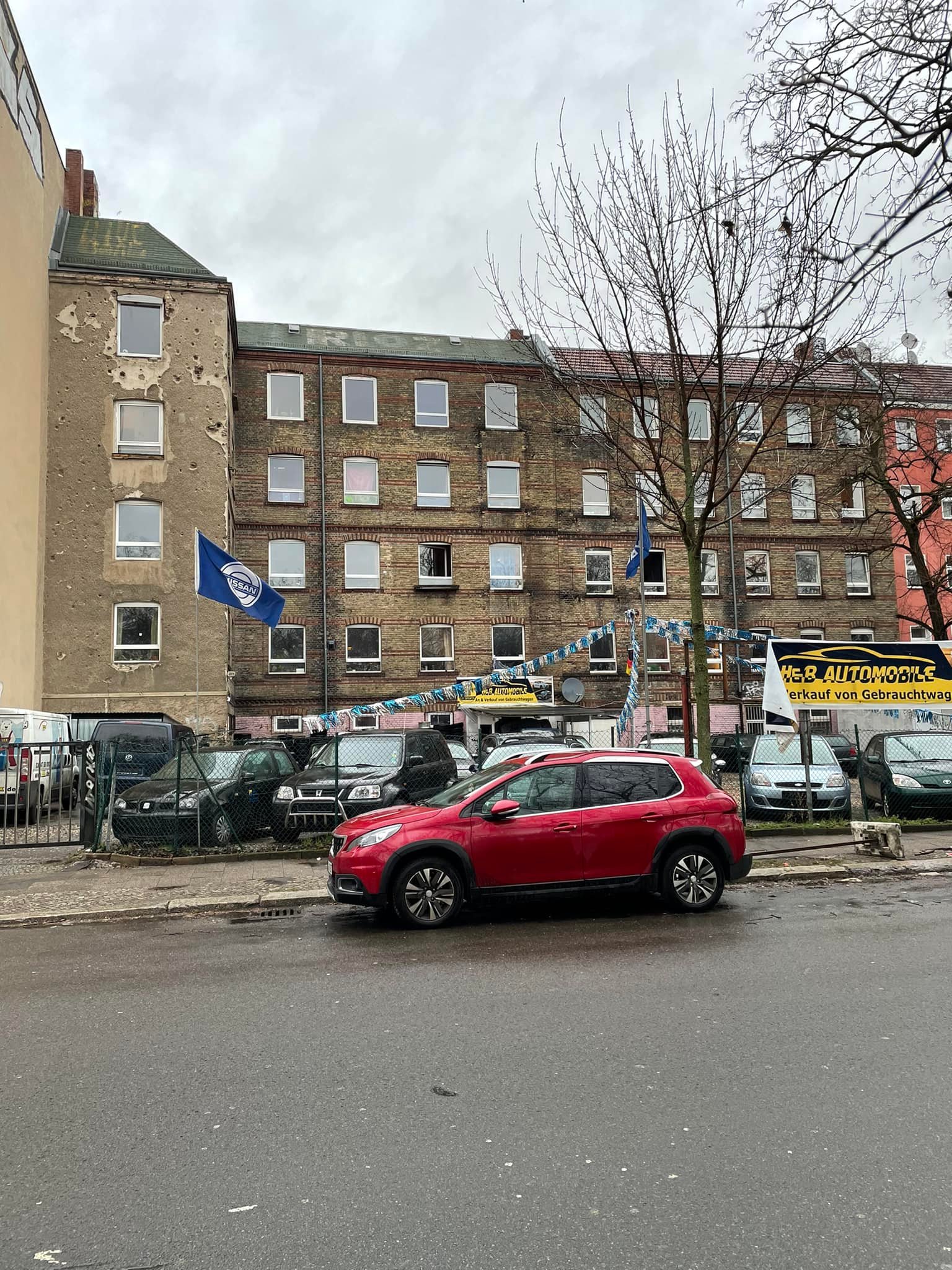
Sometimes, it’s the more every day buildings which make the biggest impression. The fairly unremarkable building, behind a small used car dealership on Saalestraße in Neukölln, shows clear evidence of heavy fighting. On April 25th 1945 Soviet forces advanced from the south and hit the German defence line along the S-Bahn ring, where the railway embankments formed an effective barrier.
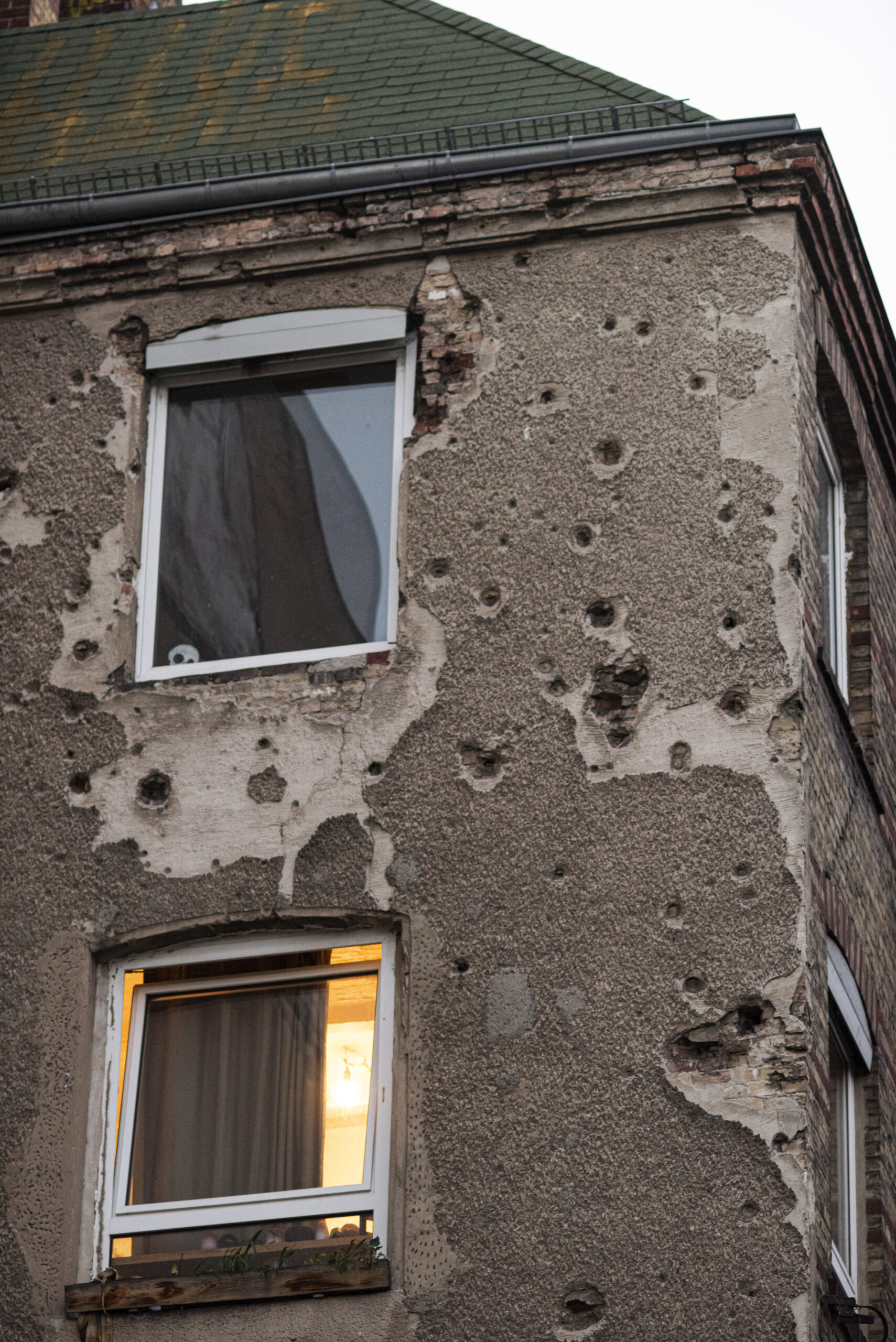
This building probably housed a sniper or a machine gun team in the top window. It doesn’t look like they would have lasted that long.
Tank marks underneath the railway bridge at Prellerweg

This is another site you might not notice at first glance: underneath a railway bridge on Prellerweg in Tempelhof there are deep gouges in the cement walls, formed when a tank drove close to the side of the bridge. These track marks are quite tall – higher than an average bicycle, allowing a sense of the scale of the vehicle which caused them.
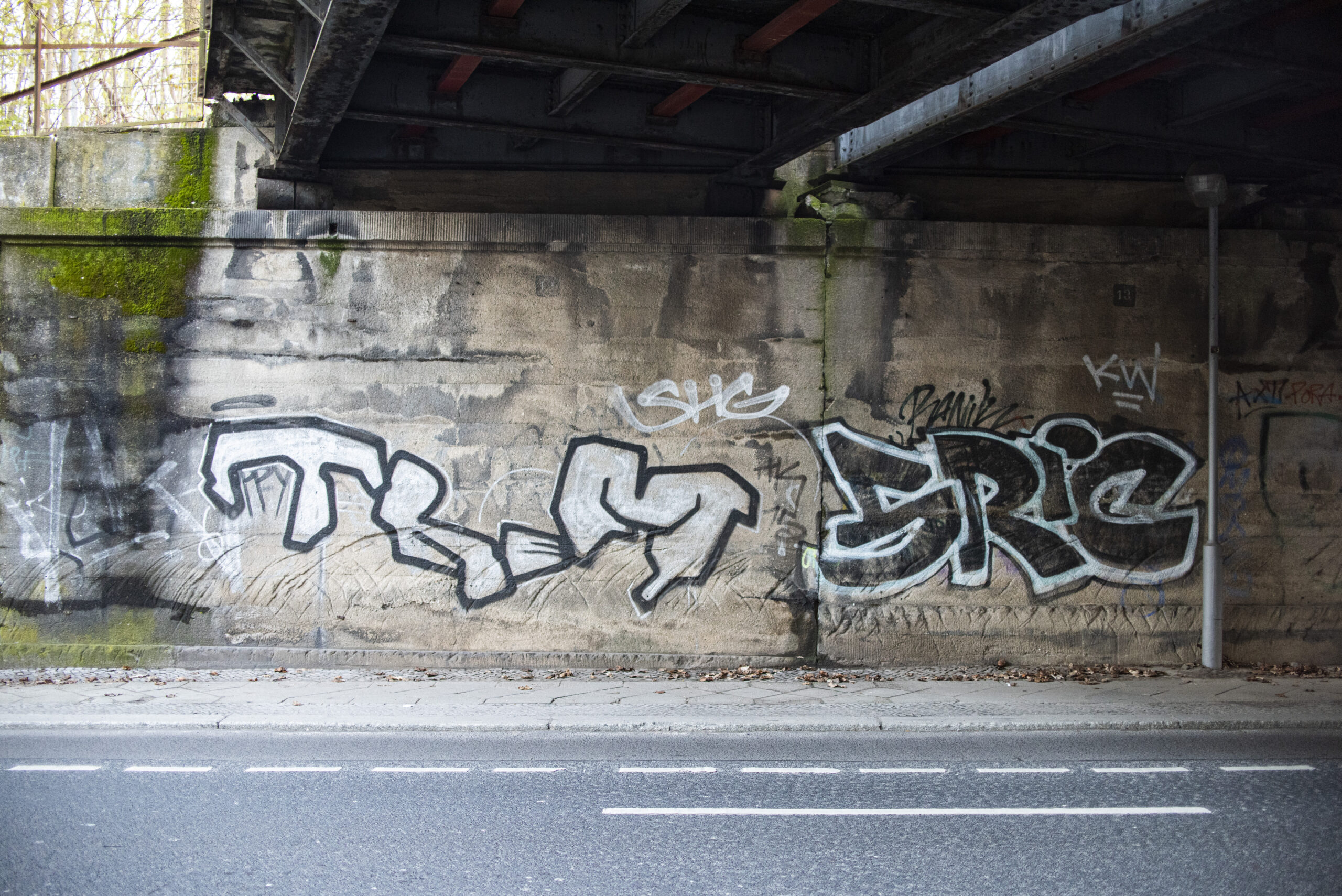
Sigismundstraße near the Landwehrcanal
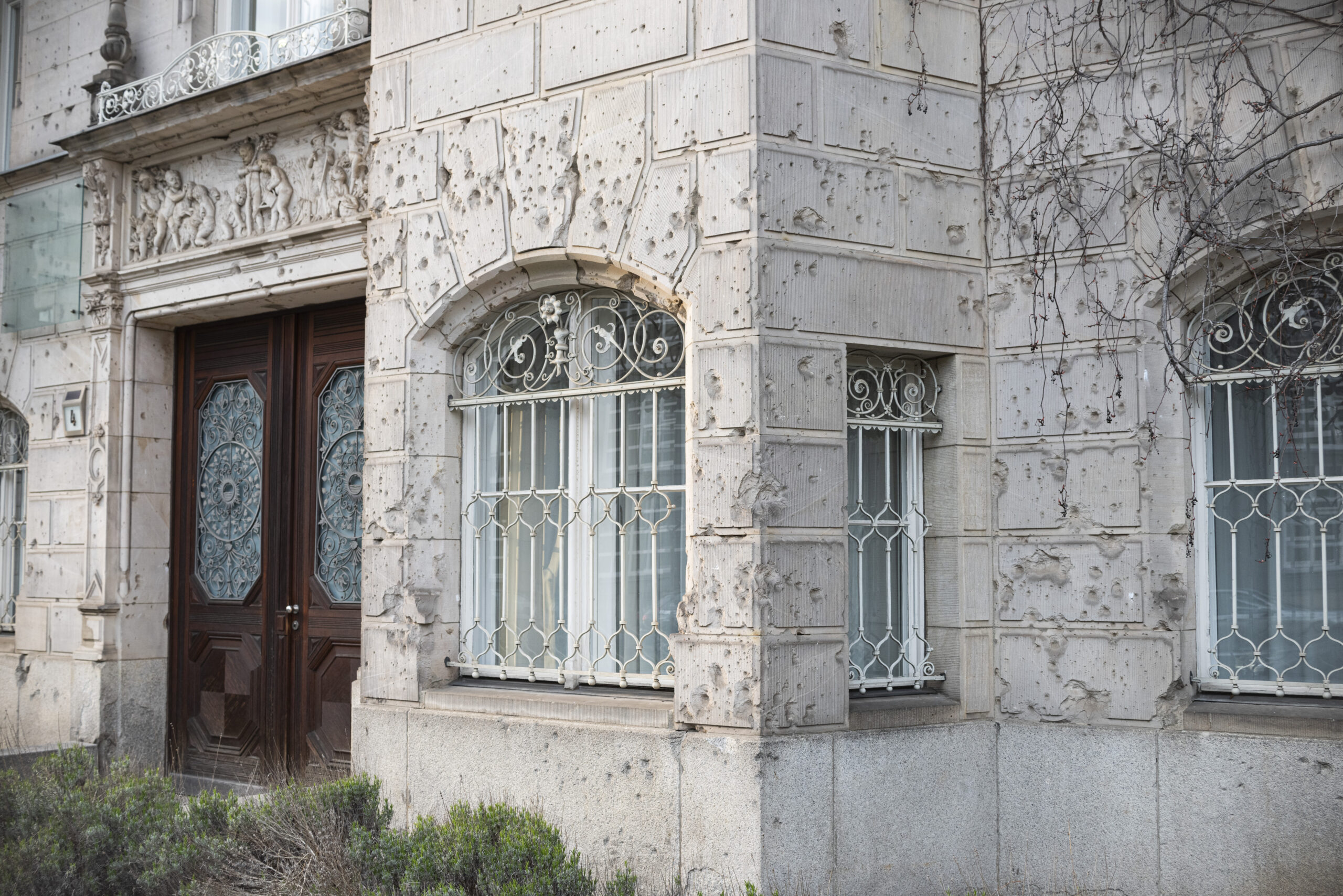
Here, on Potsdamer bridge, one of the most famous incidents of the battle of Berlin occurred. On April 30th, 1945, as the Soviets were trying to cross the bridge to head for Tiergarten, they were pinned down by machine gun fire. But when Sergeant of the Guards Nikolai Massalov heard a child crying on the opposite side of the bridge, he was determined to help. Crawling across the bridge under heavy fire, Massalov found a three year old girl whose mother had died underneath the bridge and rescued her.
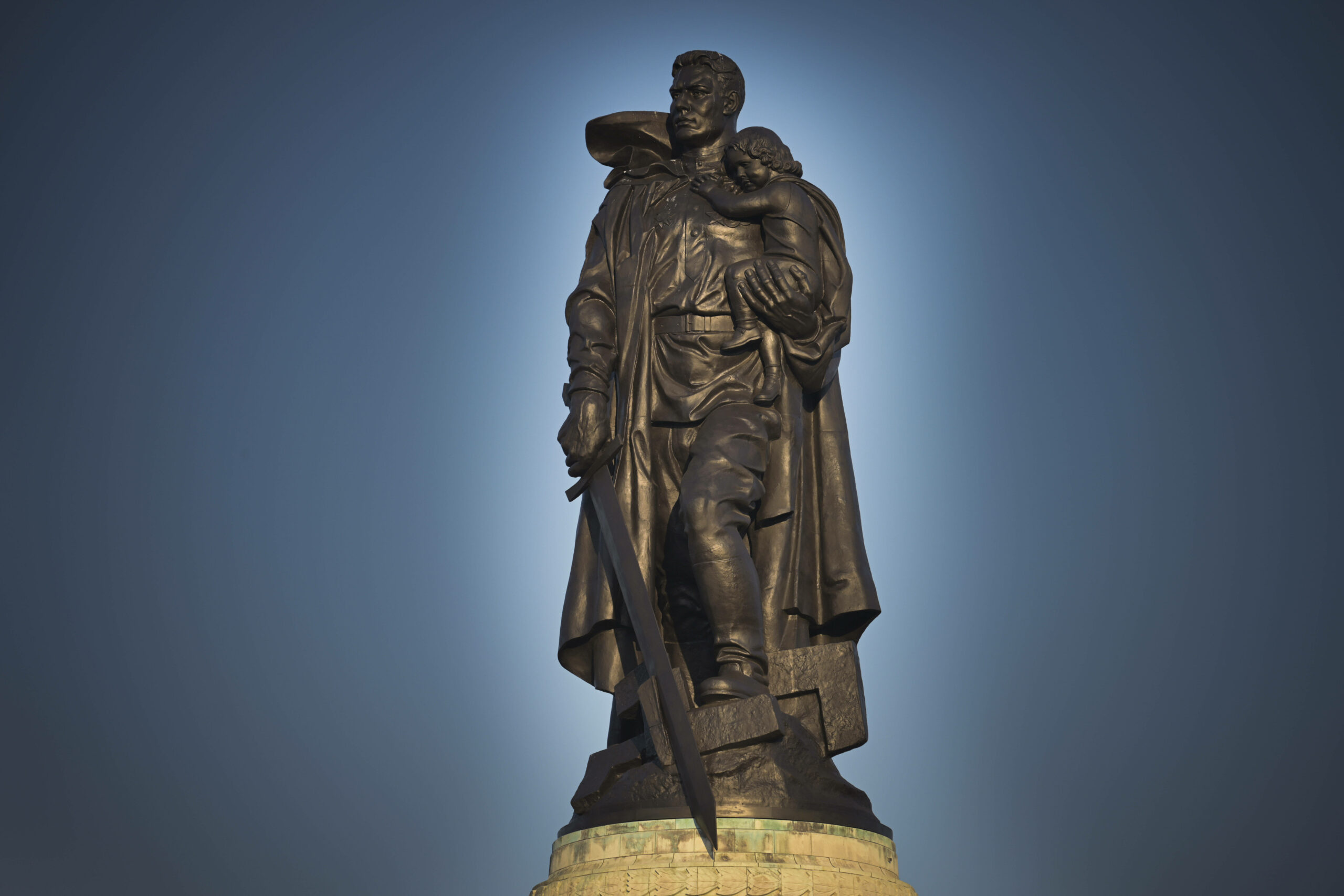
This story formed the basis for the idealised statue in Treptower park (where the soldier carries a sword, rather than a gun: a change specifically requested by Stalin).
Today you can still see signs of the fighting near the Potsdamer bridge. The house at Reichpietschufer 20 from which the Germans were firing on Massalov’s unit still stands, and nearby, on Sigismundstrasse, another German strongpoint shows dramatic battle damage. There is also a plaque on the bridge commemorating the historic location.



